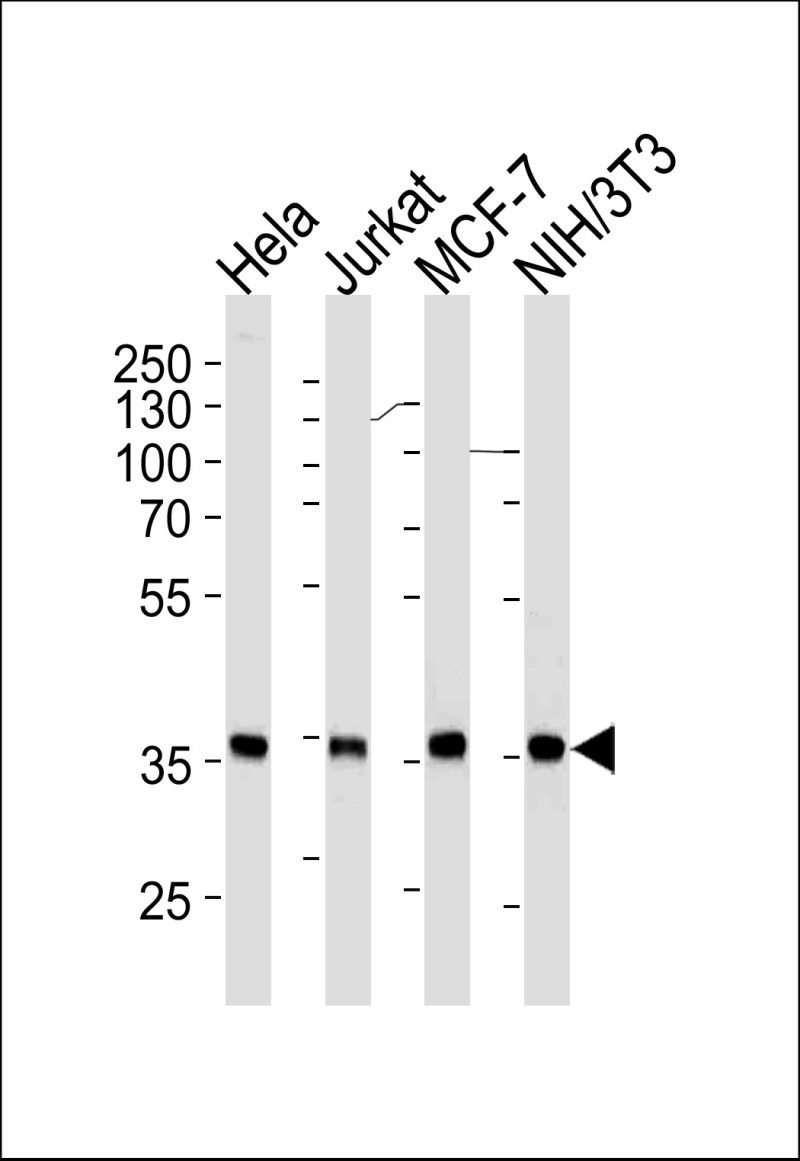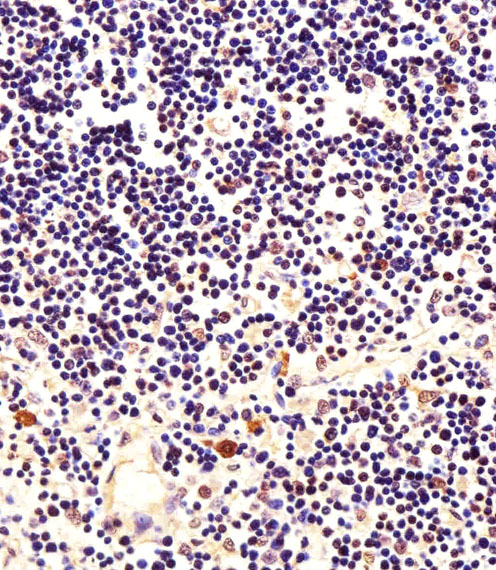

| WB | 1/1000 | Human,Mouse,Rat |
| IF | 咨询技术 | Human,Mouse,Rat |
| IHC | 1/100-1/500 | Human,Mouse,Rat |
| ICC | 技术咨询 | Human,Mouse,Rat |
| FCM | 咨询技术 | Human,Mouse,Rat |
| Elisa | 咨询技术 | Human,Mouse,Rat |
| Aliases | Nucleophosmin, NPM, Nucleolar phosphoprotein B23, Nucleolar protein NO38, Numatrin, NPM1, NPM |
| Entrez GeneID | 4869 |
| WB Predicted band size | 32.6kDa |
| Host/Isotype | Mouse IgG1 |
| Antibody Type | Primary antibody |
| Storage | Store at 4°C short term. Aliquot and store at -20°C long term. Avoid freeze/thaw cycles. |
| Species Reactivity | Human |
| Immunogen | Purified His-tagged NPM1 protein was used to produced this monoclonal antibody. |
| Formulation | Purified antibody in TBS with 0.05% sodium azide. |
+ +
以下是关于NPM1抗体的3篇文献摘要概览:
1. **文献名称**:*Immunohistochemistry predicts nucleophosmin (NPM1) mutations in acute myeloid leukemia*
**作者**:Falini B, et al. (2005)
**摘要**:该研究开发了一种特异性识别突变型NPM1蛋白的抗体,发现其在AML患者骨髓样本中可通过免疫组化(IHC)检测胞质定位的NPM1.与基因突变结果高度一致,为临床快速筛查提供工具。
2. **文献名称**:*Acute myeloid leukemia bearing cytoplasmic nucleophosmin (NPMc+ AML) shows a distinct gene expression profile characterized by up-regulation of genes involved in stem cell maintenance*
**作者**:Alcalay M, et al. (2003)
**摘要**:通过免疫荧光和Western blot分析,发现NPM1突变导致蛋白异常定位于胞质,并利用特异性抗体揭示了此类AML独特的分子特征及与干细胞相关基因的关联。
3. **文献名称**:*The role of NPM1 mutations in AML pathogenesis and prognosis*
**作者**:Cazzaniga G, et al. (2005)
**摘要**:研究比较了PCR测序与抗突变NPM1抗体检测在AML分型中的效能,强调抗体法在成本低、操作简便方面的优势,支持其作为辅助诊断手段。
4. **文献名称**:*WHO Classification of Tumours of Haematopoietic and Lymphoid Tissues* (2016版相关章节)
**作者**:Swerdlow SH, et al.
**摘要**:在WHO血液肿瘤分类指南中,明确将NPM1抗体免疫组化检测列为AML伴NPM1突变的标准诊断方法之一,强调其临床分型意义。
注:以上文献为示例性质,实际引用时建议通过PubMed或专业数据库核对具体信息。
The NPM1 antibody targets nucleophosmin (NPM1), a multifunctional phosphoprotein encoded by the *NPM1* gene. NPM1 is predominantly localized in the nucleolus, where it plays critical roles in ribosome biogenesis, centrosome duplication, and chromatin remodeling. It shuttles between the nucleus and cytoplasm, participating in cell cycle regulation, apoptosis, and stress response. Aberrant cytoplasmic localization of NPM1. caused by mutations in exon 12 (e.g., frameshift mutations like A-type), is a hallmark of approximately 30% of acute myeloid leukemia (AML) cases, particularly in cytogenetically normal AML (CN-AML). These mutations disrupt nucleolar localization signals, leading to NPM1 accumulation in the cytoplasm.
The NPM1 antibody is widely used in research and diagnostics to detect wild-type and mutant NPM1 proteins. In leukemia diagnostics, immunohistochemistry (IHC) with anti-NPM1 antibodies helps identify cytoplasmic NPM1 as a surrogate marker for *NPM1* mutations, aiding in AML subclassification and prognosis. Wild-type NPM1 detection also contributes to studying its role in cancer, neurodegeneration, and viral infections. Commercially available monoclonal and polyclonal antibodies enable applications like Western blotting, immunofluorescence, and flow cytometry. Given its clinical relevance, NPM1 antibody-based assays are valuable for understanding disease mechanisms, monitoring treatment responses, and developing targeted therapies, especially in AML with coexisting mutations like *FLT3*-ITD.
×